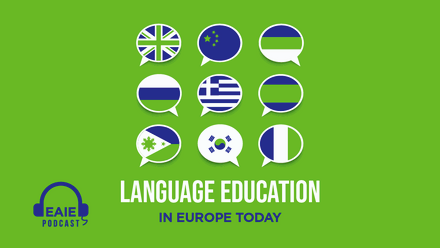The race for digital dominance

Since the introduction of the first computer tools in schools in the 1970s, the growing integration of economies and societies has made digital operations indispensable. These operations can take many forms in higher education, including distance learning, hybrid training and massive open online courses.
Digitalisation influences everyone based at universities – be they professors, administrators or students – and it has modified institutional governance and pedagogy. In 2010, Jean-Marie De Ketele defined this new standard as “upstream, the curriculum; downstream, the results of educational activities; transversally, internal context factors (academic and student environment) and external context factors (political, social, cultural, economic)”.
The field of university pedagogy does not have a long history: a few decades, maximum. It has accelerated in recent years in the context of internationalisation of higher education, improvement of the quality of education and increasing competition between higher education institutions.
Globalisation, as well as growing competition between countries and higher education institutions, has accelerated the process of introducing digital offerings into academia. In Europe, since the initiation of the Bologna Process in 1998, the wish to increase the attractiveness and competitiveness of higher education institutions on a world scale has led them to internationalise, a process affecting all of their functions.
An important lever
The introduction of information and communication technologies, and the development of distance education, demonstrates a desire to be competitive. In 2013, Thierry Karsenti highlighted the opportunity that digitalisation offereds universities to “recruit students in order to eventually lead them to enrol in other courses offered by the university”. Online teaching devices generate interest and help to promote ‘on-site’ courses, enabling universities to increase their influence by exporting knowledge (commercial relationships) and sharing knowledge (development aid).
ICT is considered as an important lever “to achieve the great challenges of European construction”. Indeed, according to Bernadette Charlier and France Henri, it could help “create a European education and training area, the quality of which would be improved by online learning”. However, there is the need for a common strategy for the development of online training systems.
Some universities – in the United States, for example – consider distance learning a tool for deploying their teaching models. Distance learning removes limits and provides universities with the opportunity to target and reach a wider audience in a context where they “can no longer limit themselves to local and national attractiveness”, as Sylviane Bachy wrote in 2013.
Distance learning has an impact on the construction of content
The introduction of distance in training is also an important lever for developing a cultural and linguistic policy abroad: ‘soft power’, consolidating the status of a country on the international scene. It is a symbolic hegemony that counts as much as the economic, military, educational and climatic status of a country. It helps to structure diplomatic relations and allows the development of a nation’s economic power in a context of global economic competition.
In some countries, international student mobility has become “a fundamental component of its foreign trade balance”. Particularly in the US, universities are developing distance-learning courses that are a considerable source of income for them. In addition, they are grouping into consortia to reduce development costs.
Challenges and adaptation
As well as political considerations, careful thought must be given to university pedagogy and curricula. Distance learning has an impact on the construction of content and the application of learning devices.
The structuring of the European Higher Education Area initiated by the Bologna Process, the pressure of international rankings and the proliferation of digital technologies are pushing universities to harmonise curricula but also to adapt to new teaching practices. Depending on the target audience, different methods to promote the acquisition of knowledge or evaluation will be adopted (such as multiple-choice questionnaires or quizzes) to facilitate understanding of the course and the evaluation process. Online training must also be accompanied by relevant educational scenarios for learners who need a certain level of autonomy.
Will digital courses replace traditional teaching methods? More likely they will widen the range of choice
At the European level, we see a scattering of initiatives. In 2013, Yves Epelboin even described the European efforts as “anarchy” and outlined the need to create a single European platform. But the main obstacles are linked to the internal organisation of universities. Many professors have expressed their fear of failure related to distance-learning devices; they are struggling to find their place in modern educational practices. Their role is being modified: they are becoming planners, engineers and tutors. Yet they are not always encouraged to use digital tools and they sometimes suffer from a lack of support and training.
Moreover, in some target countries, especially the least developed ones, a lack of equipment or internet access can be an obstacle. In addition, the status of teachers in some countries, and the need for the physical presence of students and recorded lesson hours, may hinder the development of online courses. Another difficulty is intellectual property, with some teachers refusing to share documents in a digital format.
Global expansion
Despite these challenges, the introduction of distance learning can be of great benefit, boosting the internationalisation of universities abroad by strengthening their visibility and attractiveness, and at home with the introduction of an international dimension.
Even if virtual exchanges will not replace physical mobility, ICT can overcome certain barriers: economic, physical and geographical. It is therefore legitimate to wonder about the recognition of virtual mobility, especially in terms of assessing the degree of internationalisation of higher education institutions.
Will digital courses replace traditional teaching methods? I think it is more likely that they will widen the range of choice, allowing establishments to expand their training offers around the world.






